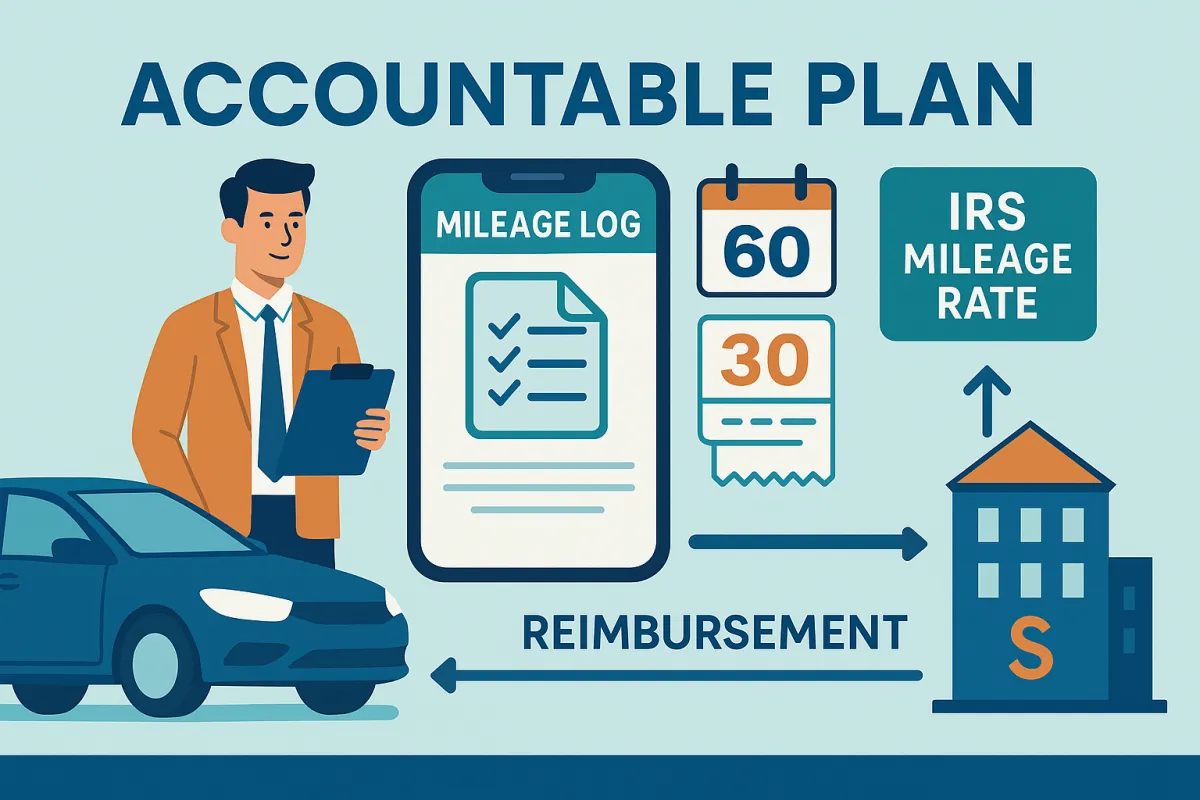
Why S Corporation Shareholders Must Be Careful About Using Personal Vehicles for Business
S corporation shareholders who use their personal vehicles for business may assume the process is simple: track the miles, note the business trips, and get reimbursed. But under U.S. tax law and Generally Accepted Accounting Principles (GAAP), the issue is more complex—and the wrong approach could cost the shareholder and the corporation valuable tax deductions.
Tax Law and GAAP Don’t Always Align
While GAAP allows for some flexibility when reporting transactions in financial statements, federal tax law is stricter. For instance, GAAP may treat unreimbursed vehicle use as a capital contribution to the corporation, increasing equity without affecting the income statement. But that treatment doesn’t help during tax season. The Internal Revenue Code, especially after the 2017 Tax Cuts and Jobs Act (TCJA), does not allow a shareholder-employee to deduct unreimbursed vehicle expenses on their personal tax return—at least not through 2025.
What does this mean in practice? If a shareholder uses their own car for company errands, meetings, or travel, and the company doesn’t reimburse them, they can't claim that business use as a deduction on their personal return. At the same time, the corporation can't deduct the expense either, because it didn't actually pay for it.
The Fix: Use a Written Accountable Plan
To avoid losing deductions altogether, the best solution is for the S corporation to adopt a formal accountable reimbursement plan. This type of plan is governed by IRS regulations and allows the company to reimburse employees (including shareholder-employees) for legitimate business expenses without treating those payments as taxable income.
An accountable plan must meet three conditions:
Business Connection – The expenses must relate to the employee’s work.
Substantiation – The employee must submit detailed records, including the date, business purpose, and mileage for each trip.
Return of Excess – If the employee receives more than the substantiated amount, the excess must be returned.
With an accountable plan in place, the corporation can deduct the full reimbursement, and the shareholder does not have to report it as income.
What About GAAP?
From a financial accounting perspective, the S corporation must follow the separate entity concept, which treats the business as separate from its owners. If the corporation receives a benefit from the shareholder’s vehicle, that’s a business event that needs to be recorded.
If the corporation reimburses the shareholder under an accountable plan, the accounting entry is straightforward:
Debit: Vehicle or travel expense
Credit: Cash (or accounts payable)
If there is no reimbursement, GAAP requires the company to record the expense and credit the shareholder’s additional paid-in capital (APIC). In other words, the shareholder is treated as having made a non-cash contribution to the business. While technically correct under GAAP, this method is discouraged—it creates complications in the equity section and doesn’t benefit either party on the tax side.
How Should Reimbursement Be Calculated?
The IRS allows two main methods for reimbursing vehicle use under an accountable plan:
1. Standard Mileage Rate
This is the most common approach. The IRS sets a rate each year (e.g., 67 cents per mile in year 20XX) that covers all vehicle operating costs, including gas, depreciation, and insurance. Tolls and parking can be reimbursed separately.
2. Actual Expense Method
This method requires tracking every cost associated with the vehicle (fuel, repairs, insurance, depreciation, etc.) and calculating the percentage of use attributable to business. While valid, it’s more complex and time-consuming.
What Happens If There’s No Plan?
If the corporation reimburses the shareholder without following the rules of an accountable plan, the IRS considers those payments taxable compensation. That means:
The shareholder must report the reimbursement as income on Form W-2.
The reimbursement is subject to payroll taxes (FICA, FUTA).
The corporation can still deduct it, but as wages, often at a higher net cost.
If there’s no reimbursement at all, the situation is even worse: no deduction for the shareholder and no deduction for the company.
What Clients and Their CPAs Should Do Next
S corporations should act quickly to ensure compliance. Here are the steps:
Review Current Practices – If reimbursements are being made informally—or not at all—now is the time to fix it.
Adopt an Accountable Plan – The corporation should draft a simple board resolution or corporate policy that clearly follows IRS rules.
Educate Shareholders – Shareholders must understand that logging their business mileage is not optional. A contemporaneous log is required to meet IRS standards.
Choose a Method – The standard mileage rate is recommended for its simplicity and low audit risk.
Set Up a System – Establish a process for submitting expense reports monthly. Use apps like MileIQ or TripLog to automate recordkeeping.
Book It Correctly – Ensure that all reimbursements are recorded properly in the accounting system.
Stay Timely – Reimbursements should be made within 30 days of receiving the report, and logs should be submitted within 60 days of the expense.
Compliance Matters
Mileage logs must be kept as trips occur—rebuilding them at year-end is not considered reliable. To stay compliant with IRS guidelines, both documentation and timing matter.
Failing to implement an accountable plan may seem like a minor oversight, but it creates significant risk: lost deductions, misclassified wages, and potential IRS penalties. By contrast, adopting a proper plan ensures tax efficiency for both the corporation and the shareholder—and keeps the books and returns in alignment.
Click here to learn more about our Compliance Audit Prep Academy (Cap Academy) — where we prepare accredited schools for audit success.

